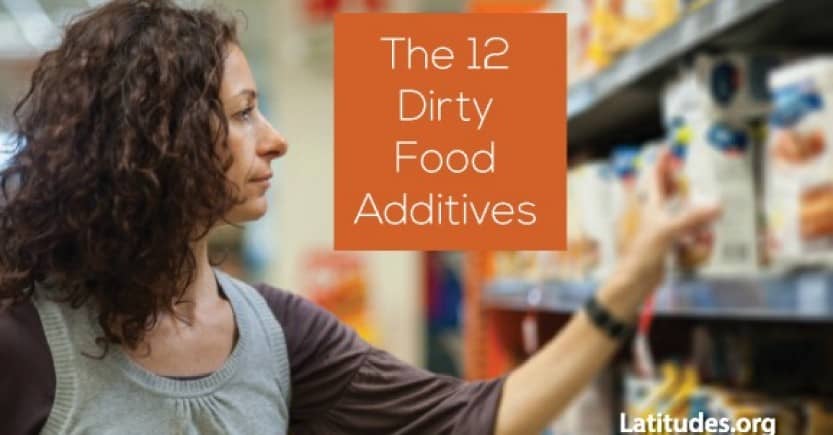The Dirty Dozen in Food Additives
Many of our readers are aware of the dirty dozen in fresh produce. Researched by the Environmental Working Group (EWG), consumers are advised on which produce items are most likely to have high level of pesticides.
Now the EWG has come up with a new guide to help us understand which food additives are most important to avoid. Of course, individuals may have specific sensitivities that require additional exclusions.
EWG says: “Food should be good for you. But some isn’t. More than 10,000 additives are allowed in food. Some are direct additives that are deliberately formulated into processed food. Others are indirect additives that get into food during processing, storage and packaging. How do you know which ones to avoid because they raise concerns and have been linked to serious health problems, including endocrine disruption and cancer? The guide covers ingredients associated with serious health concerns, additives banned or restricted in other countries and other substances that shouldn’t be in food. And it underscores the need for better government oversight of our food system.”
See each link below for a description of the items in that category:
Food additives linked to health concerns
- Nitrates and nitrites
- Potassium bromate
Generally recognized as safe, but is it?
- Parabens
- Butylated hydroxyanisole (BHA)
- Butylated hydroxytoluene (BHT)
- Propyl gallate
- Theobromine
- Secret flavor ingredients
Food colors: questions and contamination
- Artificial colors
The flavoring industry and worker health
- Diacetyl
- Phosphate food additives
- Aluminum additives










I’m glad you shared this. I’ve always followed the dirty dozen and clean 13 for produce. I started becoming more aware of extra ingredients in processed food, and aside from avoiding artificial colors, flavors, and obvious preservatives, I had no idea what I was looking at! This helps a lot!